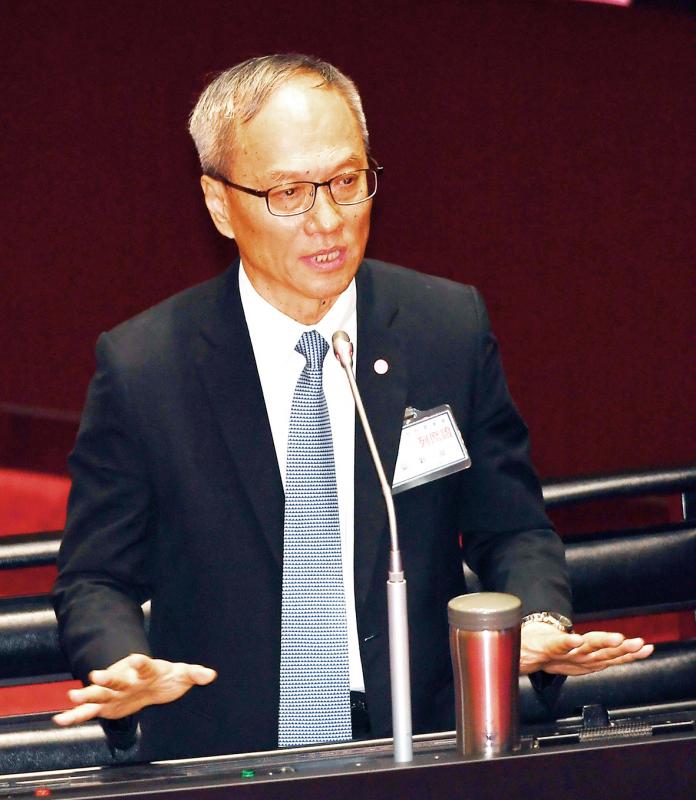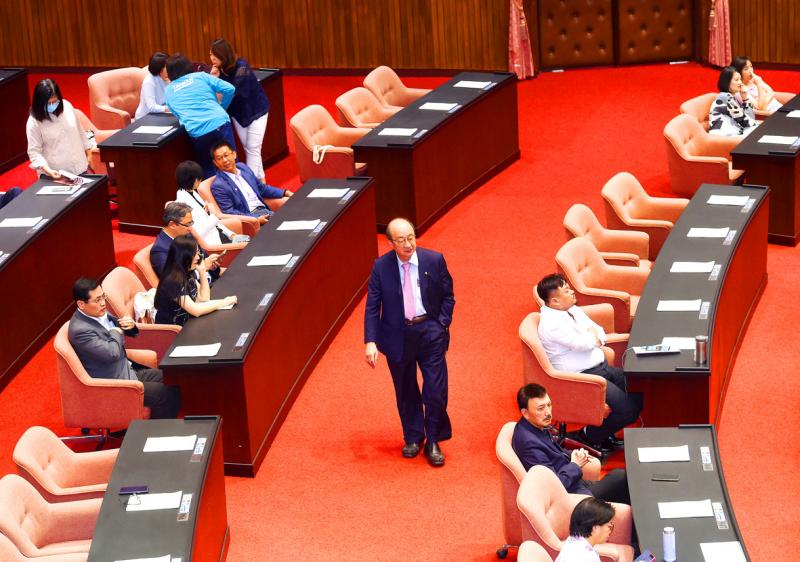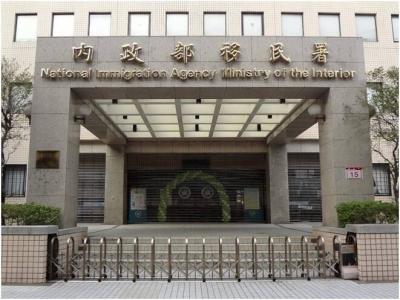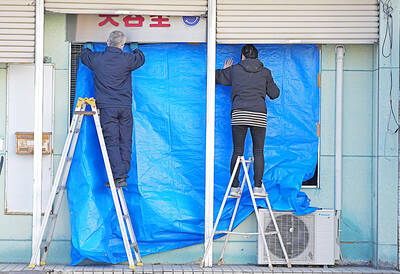Examination Yuan member nominee Wu Hsin-hsing (吳新興) yesterday faced tough questions from Chinese Nationalist Party (KMT) lawmakers about his position on the so-called “1992 consensus,” even as the party itself appears to be split over the issue.
The Legislative Yuan has been reviewing the Presidential Office’s proposed nominees for the Examination Yuan, including Wu, 68, a former Overseas Community Affairs Council minister.
Citing Wu’s published works, KMT Legislator Charles Chen (陳以信) said that the nominee appeared to support the “1992 consensus” before he worked for the government and could even be said to be a pro-unification advocate.

Photo: CNA
The “1992 consensus” — a term that former Mainland Affairs Council chairman Su Chi (蘇起) in 2006 admitted making up in 2000 — refers to a tacit understanding between the KMT and the Chinese Communist Party (CCP) that both sides of the Taiwan Strait acknowledge that there is “one China,” with each side having its own interpretation of what “China” means.
Wu said his comments on the so-called “consensus” were made during the period when Lee Teng-hui (李登輝) was president and that they were very objective, as the phrase did not exist during Lee’s time.
Addressing his works, Wu said that an academic must be inclusive and consider all views when making an analysis.

Photo: Fang Pin-chao, Taipei Times
Wu added that Lee had proposed to China that two sides of the Taiwan Strait could form a “Chunghwa Union” or “Chunghwa Commonwealth,” a proposition that Beijing rejected.
Wu said that he has been consistent in his opposition to the CCP and his support for Taiwanese sovereignty, democracy and freedom.
When asked by KMT Legislator Lee De-wei (李德維) how he intended to stay neutral when he is the only nominee affiliated with a party, Wu, a Democratic Progressive Party member, said that he would abide by all regulations.
The KMT itself appears to be split over the “1992 consensus,” which is widely seen as the party’s lynchpin for cross-strait affairs.
KMT Chairman Johnny Chiang (江啟臣) has been vocal about wanting to set aside the “consensus,” but his comments have stirred waves within the party and upset the old guard, including former party chairmen Ma Ying-jeou (馬英九), Lien Chan (連戰), Wu Den-yih (吳敦義) and Wu Po-hsiung (吳伯雄).
On Sunday, while attending an event by the party’s Institute of Revolutionary Practice, Ma said that one should first propose a viable alternative to the “consensus.”
If Beijing wished to cement the “consensus” as the guiding principle for cross-strait relations, it must adhere to the entirety of the concept and allow for different interpretations of “one China” by the two sides of the Strait, Ma said.
Beijing’s skewing of the concept has lent credence to President Tsai Ing-wen’s (蔡英文) claim that the “consensus” is the equivalent of “one country, two systems,” Ma said, adding that the KMT must clarify that the two concepts are different.
Both the ruling and opposition parties should consider a term that could replace the “1992 consensus” while remaining palatable to Beijing, former legislative speaker Wang Jin-pyng (王金平) said.
Wang downplayed reports of a KMT split over the issue, saying that people have their own views on issues and their expressions of them should not be taken as infighting.
Additional reporting by CNA

A small number of Taiwanese this year lost their citizenship rights after traveling in China and obtaining a one-time Chinese passport to cross the border into Russia, a source said today. The people signed up through Chinese travel agencies for tours of neighboring Russia with companies claiming they could obtain Russian visas and fast-track border clearance, the source said on condition of anonymity. The travelers were actually issued one-time-use Chinese passports, they said. Taiwanese are prohibited from holding a Chinese passport or household registration. If found to have a Chinese ID, they may lose their resident status under Article 9-1

Taiwanese were praised for their composure after a video filmed by Taiwanese tourists capturing the moment a magnitude 7.5 earthquake struck Japan’s Aomori Prefecture went viral on social media. The video shows a hotel room shaking violently amid Monday’s quake, with objects falling to the ground. Two Taiwanese began filming with their mobile phones, while two others held the sides of a TV to prevent it from falling. When the shaking stopped, the pair calmly took down the TV and laid it flat on a tatami mat, the video shows. The video also captured the group talking about the safety of their companions bathing

PROBLEMATIC APP: Citing more than 1,000 fraud cases, the government is taking the app down for a year, but opposition voices are calling it censorship Chinese Nationalist Party (KMT) Chairwoman Cheng Li-wun (鄭麗文) yesterday decried a government plan to suspend access to Chinese social media platform Xiaohongshu (小紅書) for one year as censorship, while the Presidential Office backed the plan. The Ministry of the Interior on Thursday cited security risks and accusations that the Instagram-like app, known as Rednote in English, had figured in more than 1,700 fraud cases since last year. The company, which has about 3 million users in Taiwan, has not yet responded to requests for comment. “Many people online are already asking ‘How to climb over the firewall to access Xiaohongshu,’” Cheng posted on

A classified Pentagon-produced, multiyear assessment — the Overmatch brief — highlighted unreported Chinese capabilities to destroy US military assets and identified US supply chain choke points, painting a disturbing picture of waning US military might, a New York Times editorial published on Monday said. US Secretary of Defense Pete Hegseth’s comments in November last year that “we lose every time” in Pentagon-conducted war games pitting the US against China further highlighted the uncertainty about the US’ capability to intervene in the event of a Chinese invasion of Taiwan. “It shows the Pentagon’s overreliance on expensive, vulnerable weapons as adversaries field cheap, technologically